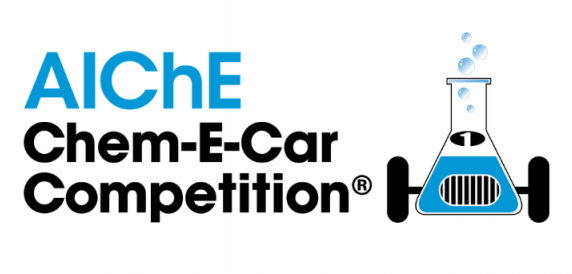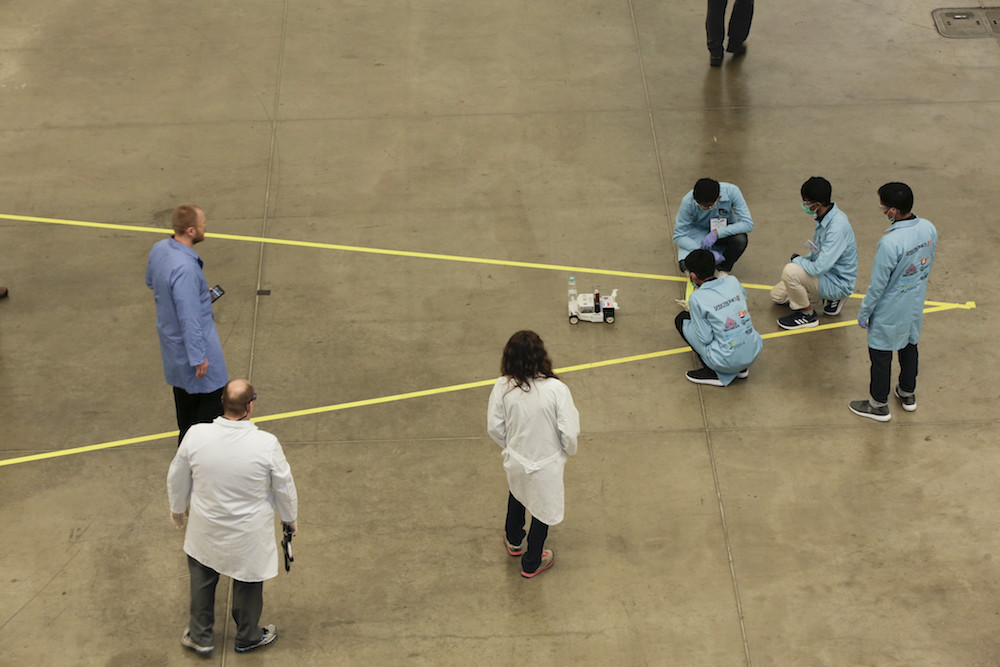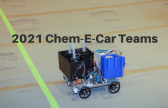Chem E Car Power Source
The power source is a Zn-Air battery. Fuel cell batteries of varying salinity pH.
No commercial batteries are allowed as the power source.

. No liquid discharge is allowed. It must also be heavily tested in varying conditions to ensure successful operation for competition day. Power source can be reproducible on competition day and no liquid also odor discharge is allowed.
Reactics Palapa is a chem-e-car that applies the concept of voltaic cell for its power source and uses the Chameleon reaction as its stopping mechanism. The power source of the car and brake system of the car is based on chemical reaction properties. Each sub-team operates as an interdependent entity with project requirements set at the beginning of the design cycle.
Oxygen is collected from. AIChEs annual Chem-E-Car Competition engages college students in designing and constructing a car powered by a chemical energy source that will safely run a specific given distance and stop. A combination of wood material and rattan was used to build the reactor and car body.
The only energy source for the propulsion of the car is a chemical reaction. No obnoxious odor discharge is allowed. Fuel cella cell that converts fuel to electricity via an electrochemical reaction to power their carOne of the famous ones is the iodine clock reactionThis reaction works by using two clear solutions many variations that change color after a time delay the exact time can.
Use of chemical reaction to power a vehicle is a regular research today. To explore the utility of household products as unconventional yet efficient energy sources a car powered entirely by chemical reactions was built. Power Source The power source team researches tests and designs an energy source to power the car.
A homemade zinc-air battery powers an electric motor driving the rear axle. Each year we attend the regional competition and compete against other Northeastern universities. This car is powered by a set of thermoelectric generators TEG which utilises the heat gradient between two reactors.
The hot-side reactor chambers were filled with 336 g of CaO and 90 ml of. Builds an energy source battery fuel cell combustion engine to power the motor and hence the propulsion of the car. In this car design three reactors were used as the power source and were placed over the back wheels.
But we at CHEM E CAR are looking for some of the best designs that can overcome the daunting challenges faced by engineers in their search for alternative source of power. Steven Zheng Rueih Sheng Sophia Weng Andy Shin Abirami Murugappan Richard Sim Xinran Tian Matthew Helle Stephen Bagley Matthew Chang Justine Kang. 2017 Chem-E Car - E-Wagon March 01 2017 This custom-made chem-e car features - i power source - manganese dioxide zinc battery ii stopping mechanism -iodine clock reaction and iii double decker bus design.
Our club while a branch of the American Institute of Chemical Engineers AIChE consists of students of all engineering and science majors working to design and construct a small chemical powered model car. A Chem-E-Car known as SMARTTRONS was powered by thermoelectric generator utilizing temperature gradient of two reactors. Chemical Engineering students of all levels contribute through their knowledge of chemical reactions physics circuits and thermodynamics.
The most popular stopping mechanism for the Chem-E-Car Competition is the Iodine Clock Reaction which involves mixing a form of iodine redox reagent and starch. The Chem-E Car team is split into five sub-teams. Chem E Car offers students a great opportunity for experiential learning in many areas.
Each competition team builds a chemically powered shoebox-sized car to participate in a regional competition. UNNES has designed a Chem-E-Car prototype named Semarang Robotic Technology of UNNESs Chemical Cars or in short SMARTTRONS. Power Source Stopping Mechanism Electrical Mechanical and Management.
The research team develops researches and designs possible stopping and power mechanisms for future cars. The stopping mechanism has to be controlled by a chemical reaction. The travel time is determined the produced foam volume.
For a suitable alternative energy source is greater than ever. The AIChE Chem-E-Car competition is an annual event serving as an opportunity for chemical engineering undergraduates to utilize their knowledge and skills attained through engineering coursework and construct a small-scale vehicle powered by an unconventional source of chemical energy. Power source for the propulsion of the car in Chem-E-Car Competition is a chemical reaction.
Meanwhile the car will automatically stop by a colour change reaction. The Chem-E-Car means chemically energized car. The energy sources must provide a consistent output of energy and be able to be constructed at the day of the competition.
Mg s H 2 SO 4 aq MgSO 4 aq H 2 g Reaction products as seen above are magnesium sulfate and hydrogen gas used in a hydrogen fuel cell to run the car Hydrogen gas produced in the original reaction vessel is transferred to a connected vessel filled with water to remove unwanted vapor produced by the reaction. Chem-E Car The Chemical Engineering Car Chem-E-Car is a shoe-box sized car that is powered by a chemical reaction. Our team is focused on providing power for the car through use of an aluminum air battery.
Electrochemical batteries such as lead acid galvanic cell hydrogen fuel cell or thermoelectric generators commonly used as power source for the Chem-E-Car Competition. No brakes mechanical or electronic timing devices are allowed. OUTLINE OF THE CONTEST The competition event consists of two components.
Never having been used before by the Berkeley Chem-E car team this. The car can run for a specific time and thus a specific distance given by the kinetics of a chemical reaction which produces foam with a known and controllable rate. The power source consists of 12 aluminum-air cells in series providing specific current and voltage needed to run the car.
The student-constructed vehicle is designed to. Some commonly used power sources include electrochemical batteries lead acid galvanic cell aluminum air or hydrogen fuel cell or thermoelectric generators.



No comments for "Chem E Car Power Source"
Post a Comment